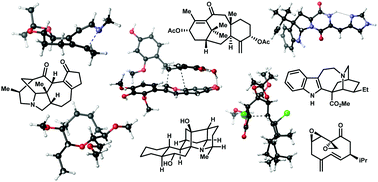Computational chemistry strategies in natural product synthesis
Abstract
The synthesis of natural products increasingly uses computational chemistry approaches to model and understand molecular phenomena. Calculations are employed to rationalize reaction outcomes, predict how a new system will perform, and inform synthetic design. As a result, new insights into the interactions of fundamental chemical forces have emerged that advance the field of complex small molecule synthesis. This review presents ten examples of computational techniques used in the synthesis of natural products, and discusses the unique perspectives afforded by these quantitative analyses.

- This article is part of the themed collection: New Directions in Natural Product Synthesis


 Please wait while we load your content...
Please wait while we load your content...